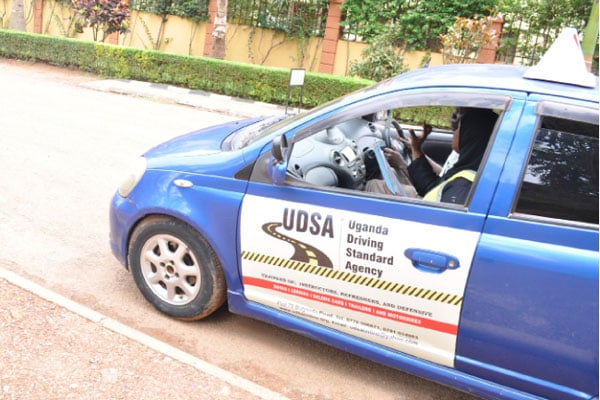Why you should never ignore driving lessons

Apart from teaching a driver how to drive, driving schools offer key lessons in regard to understanding road signs. PHOTO BY RACHEL MABALA.
What automatic cars have not done in the world of driving is a story that needs to be told.
Ostensibly, they have made driving a simple experience but again exposed drivers to dangers. Today, many people can easily navigate with little or no experience of driving.
Early this year, police reported that more than 1,024 accidents had occurred between May and June, majority of which were a result of human error, indiscipline and unqualified drivers.
Driving without a permit
“I drove for five years without a driving permit. Actually, I have never been to a driving school,” says John Magambo, who only acquired a driving permit recently because of heightened traffic police crackdown on road indiscipline.
Ironically, despite driving for all those years, Magambo can only drive an automatic car and has no idea of how to engage gears in a manual car.
“One time my friend asked me to use my car. He left his in the parking at my office. I never had any idea that it was manual. When it reached time to leave office, I could not move the car out of the parking. I just left without it as I waited for my friend to return mine,” he says.
According to Magambo, he has never been in a driving school and has no intention of going there any soon.
“I learnt driving through trial and error. My brother instructed me for a week before I tried out on my own,” he says.
Such is the risk that many drivers take and never attach much value to driving schools, which has presented Uganda with a serious crisis on its roads.
Jason Batte, the general manager of Prestige Driving School believes the current menace on roads could be a result of unqualified drivers who have no idea of what road signs mean or even understand the risk they present to human life.
“It’s only a licenced driving school that can make a driver understand how well to operate a car while on the road,” he says.
It is mandatory, according to Timothy Arinaitwe, a lawyer at Paul Byaruhanga Advocates, for any driver to go through driving lessons conducted by a licenced driving school.
Licencing driving schools
Driving schools are licenced by the directorate of transport and communication under the Traffic and Road Safety Act 1998 with the main purpose of instilling discipline and defensive driving skills among drivers.
Leaners, according to Batte, are taught both theoretical and practical lessons that mainly focus on the interpretation of road signs and actual driving.
“A learner can easily learn and understand what the law expects of him or her while on the road as the rules and regulations in driving are embedded in Traffic Highway Code,” he says.
The Highway Code, Arinaitwe says is a simple interpretation of the road rules and regulations drawn from the Traffic and Road Safety Act, which provides for road traffic laws and penalties prescribed in relation to road traffic offence.
It also prescribes the penalties for offensive driving as well as laying out guidelines that guide drivers on the road.
Acquiring a licence
Getting a driving licence is a process that is guided by the Traffic and Road Safety Act.
According to Batte, driving permits are acquired after one has enrolled and gone through driving lessons conducted by a licensed driving school. Learners are taken through a number of stages that include practical and theoretical lessons.
In driving schools, learners drive on the road under a licenced instructor with a car bearing the “L” sign which notifies other road users that the car is being manned by a learner. “This gives the learner an opportunity to familiarise with other road users as well as employing defensive driving techniques,” says He emphasizes that learners should always be on the outlook for licenced and professional drivers. AA Driving School and Dembe are some of the oldest driving schools in Uganda. Driving licences are issued by Face Technologies after a driver has passed a test conducted by the Inspectorate of Vehicles unit in Naguru.
Reducing accidents
According to the 2015 World Health Organisation report, Uganda has one of the highest traffic fatalities with more than 27.4 deaths per 100,000 people.
However, a number of measures, according to the 2016 Crime and Safety report, which include a crackdown on Unlicensed drivers, have been put in place to cut back on human fatalities.
Other measures such as eliminating drunk-driving have been adopted by the traffic police unit.




